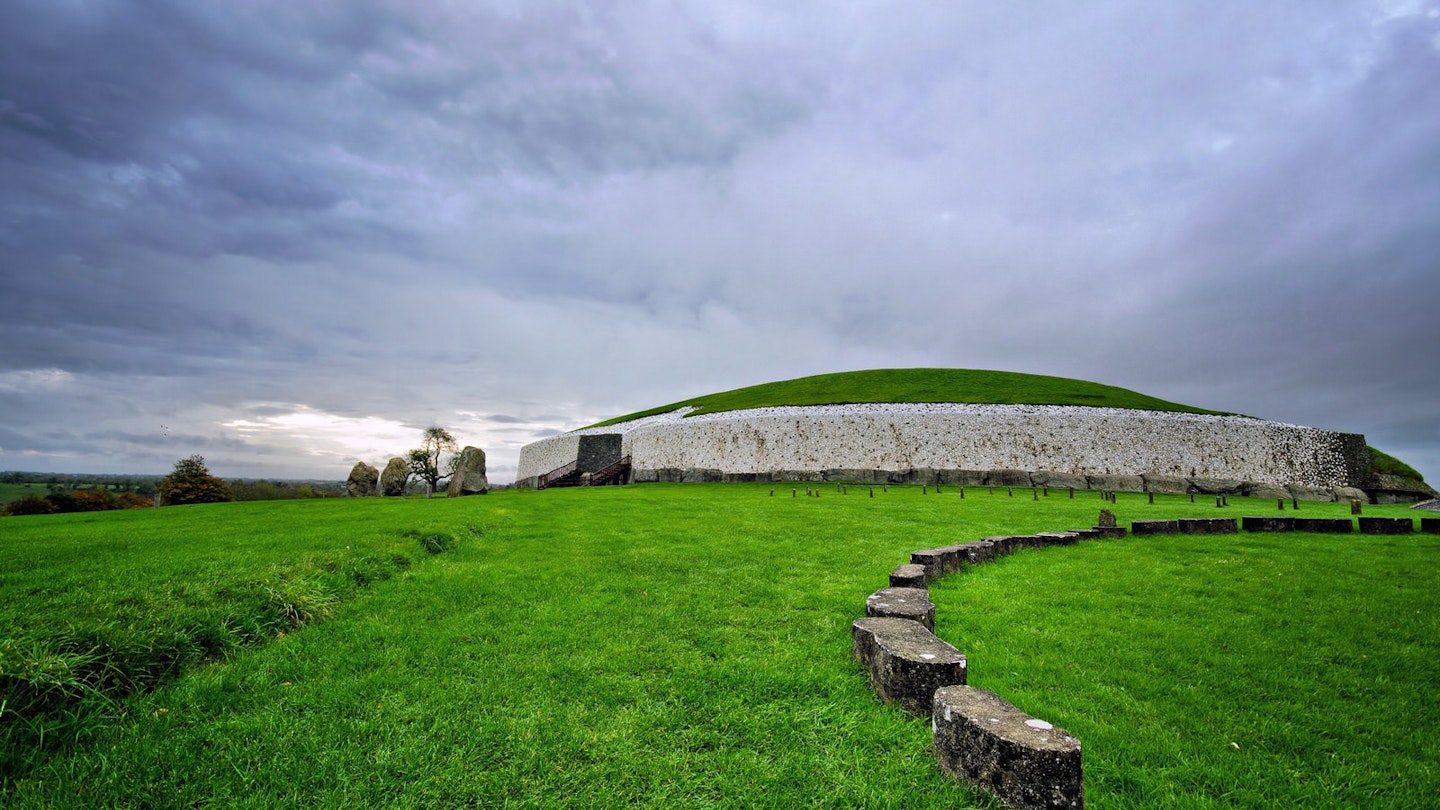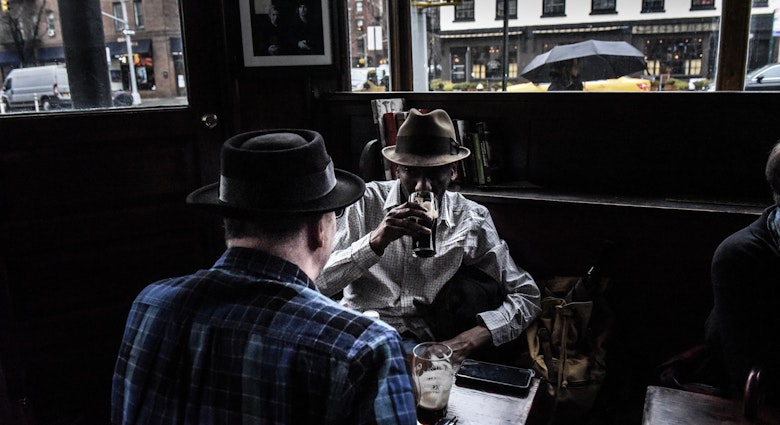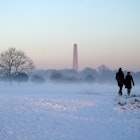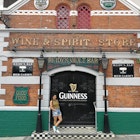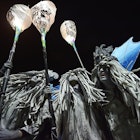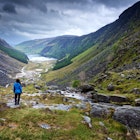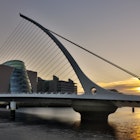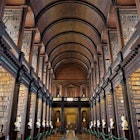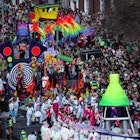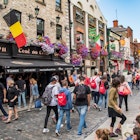Ireland’s west coast may have the wild coastline, but the east is the country’s historic heartland. Set within striking distance of Dublin, the Boyne Valley’s rich soils and rolling hills have been occupied and battled over for millennia. As a result, ancient tombs rub shoulders with Norman castles and peaceful canals bisect battlefields.
And as well as past glories, there’s food and drink to set your lips smacking.

Older than the Pyramids: Brú na Bóinne
At first glance, the famous cairns that cluster around the River Boyne, in counties Meath and Louth might elicit a shrug – most are simple passages leading into small chambers. But the more you look, the more fascinating they get.
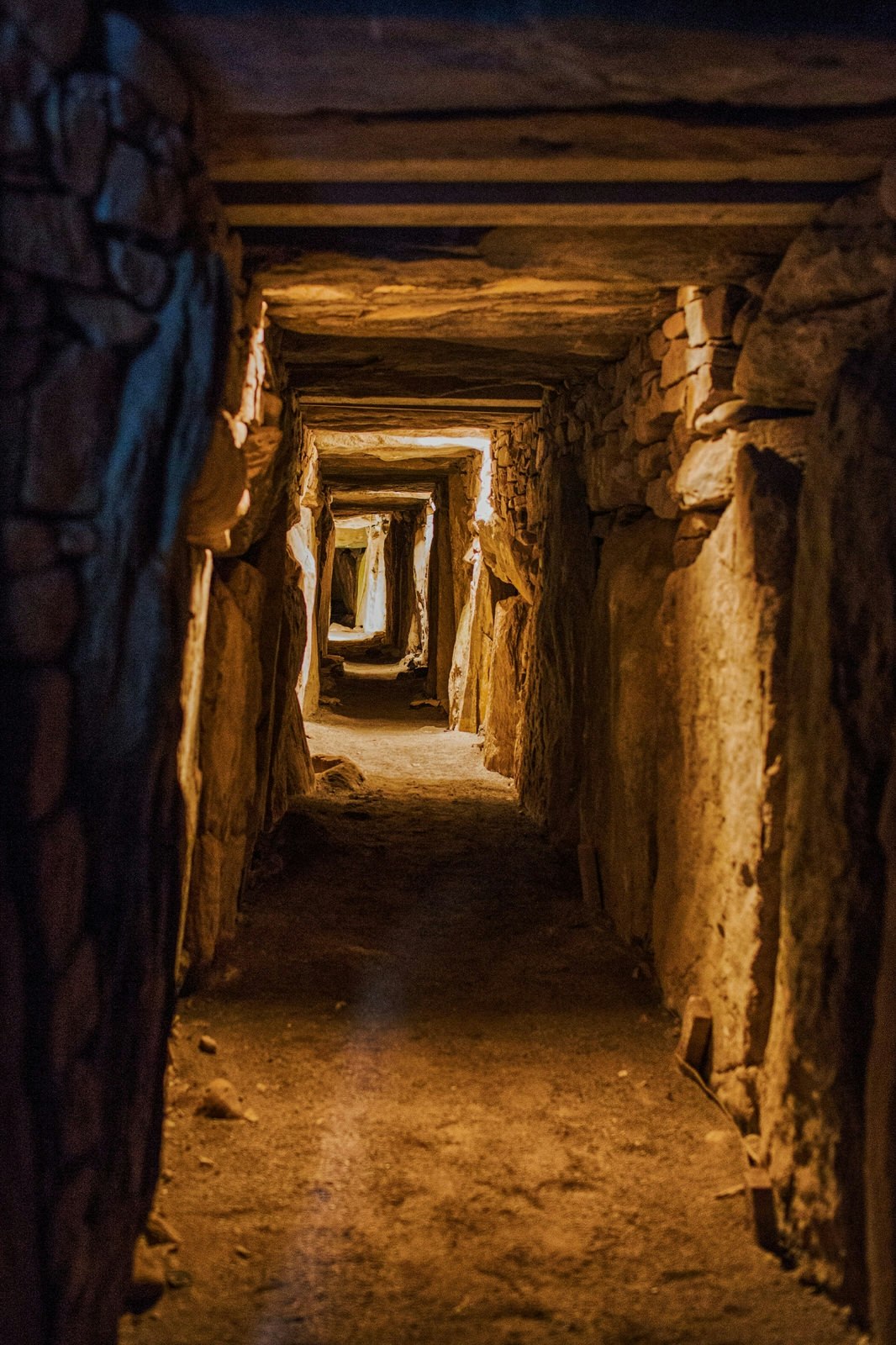
Almost 100 Neolithic monuments make up the World Heritage Site of Brú na Bóinne (‘the Palace of the Boyne’), many dating from around 3200 BC, making them around seven centuries older than Stonehenge and the Pyramids. They’re decorated with strange swirls and shapes and aligned with the sun and the landscape, yet so distant are their pre-Celtic creators that archaeologists are still guessing how the great stones were transported (possibly by river, or even rolled on seaweed) and whether they were built to honour the dead, the sun or the sea.
Stone Age magic at Newgrange and Loughcrew
Newgrange is the largest and most popular tomb, as well as the easiest to visit, via buses from the nearby visitor centre. Its 80m diameter is impressive, but the real thrill comes when you clamber through its dark tunnel, feeling the silence under muffled breath and gazing up at the enormous sandstone roof slabs as your heart stills and your eyesight sharpens. It’s hard not to feel a thorough connection to the living history of this place, an impression that swells as you stumble back out into the bright light and gentle hills of the surrounding farmland.
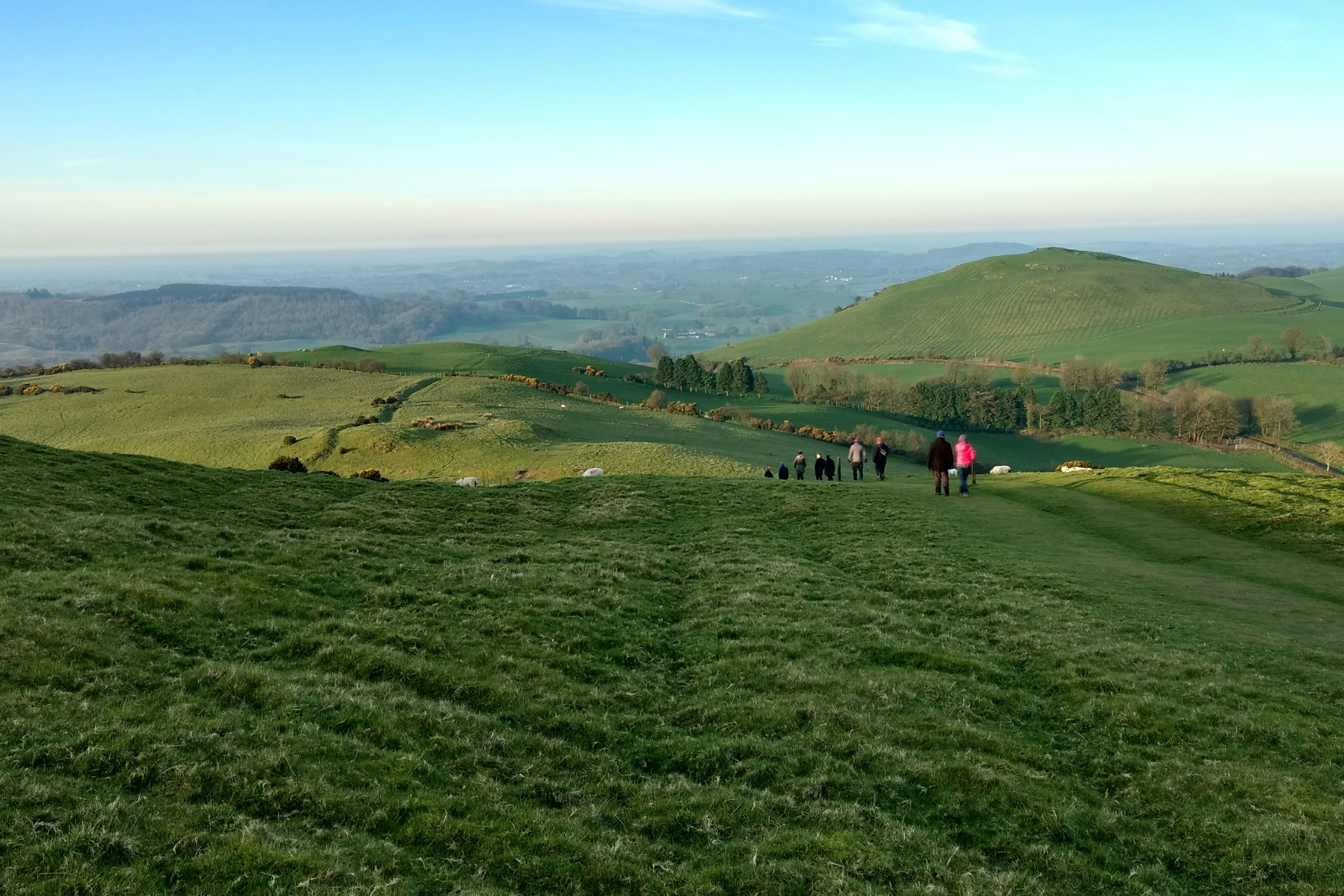
A trip to Loughcrew can be even more magical. That’s partly due to the lovely 15-minute walk from the winding R154 road, which takes you on a fairly steep climb into the Loughcrew Hills and views that stretch towards Dublin on one side and the Mourne Mountains on the other. And it’s partly due to the silence – even the most famous monument here, Cairn T, sees far fewer visitors than Newgrange. In summer, there are guides here to show you around (late April to end August), while in winter you can pick up a key from the visitor centre.
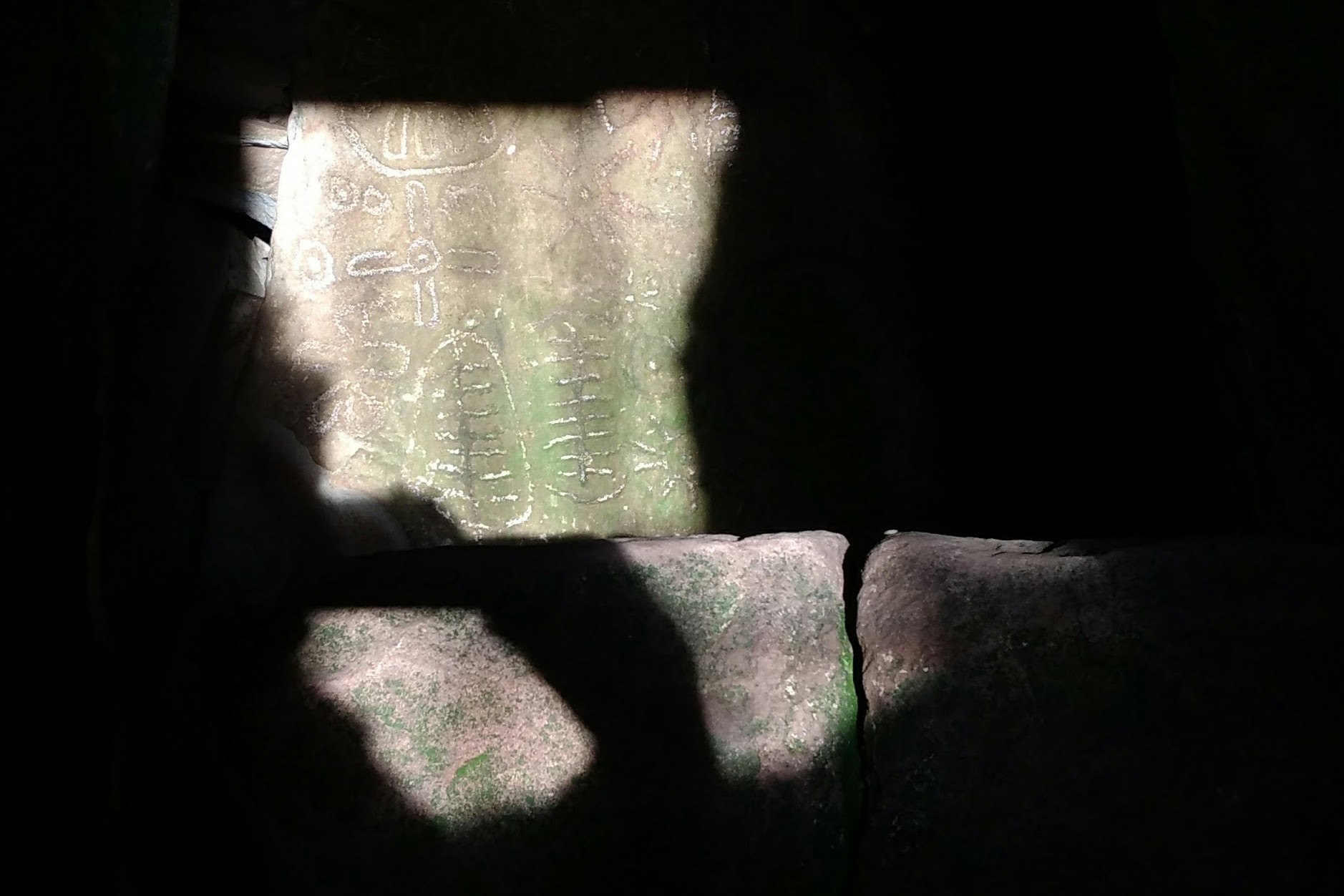
The feeling of epic discovery is heightened by the fact – only rediscovered in the 20th century – that the amber light of morning pierces the chamber at Cairn T (on the spring and autumn equinoxes) and Newgrange (at the winter equinox), bathing their mysterious symbols in a warmth and life that belies their age. At Newgrange, there’s a lottery for the winter equinox, and if you’re not lucky enough to get a place, at the end of each standard tour an artificial light is shone, mimicking its glorious effect.
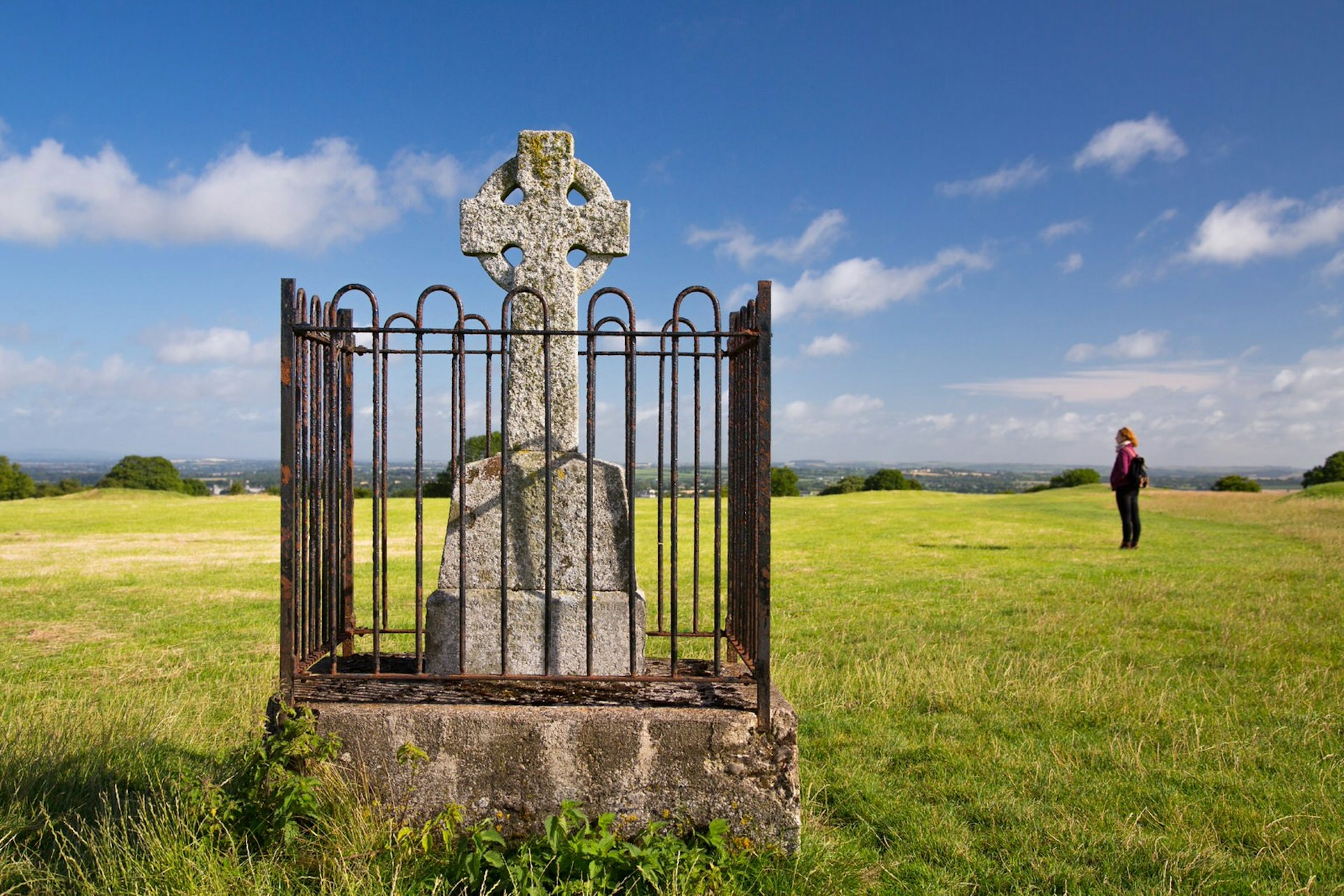
Druids, monks and mercenaries
Subsequent visitors also left their mark in this fertile region. The Celts (who decided the impressive cairns must be the work of the faerie folk) arrived around 500 BC. You can ponder the roots they laid at Tara, where a hill marks the seat of the druids and the ceremonial capital of the high kings of Ireland.
Christianity arrived around 500 AD, and Irish monasteries became vital centres of European scholarship – the market town of Kells gave its name to the magnificent Book of Kells, now displayed in Dublin’s Trinity College. The monastery that was its home for six centuries is no more, but you can explore its ruins, including a 30m-tall round tower.
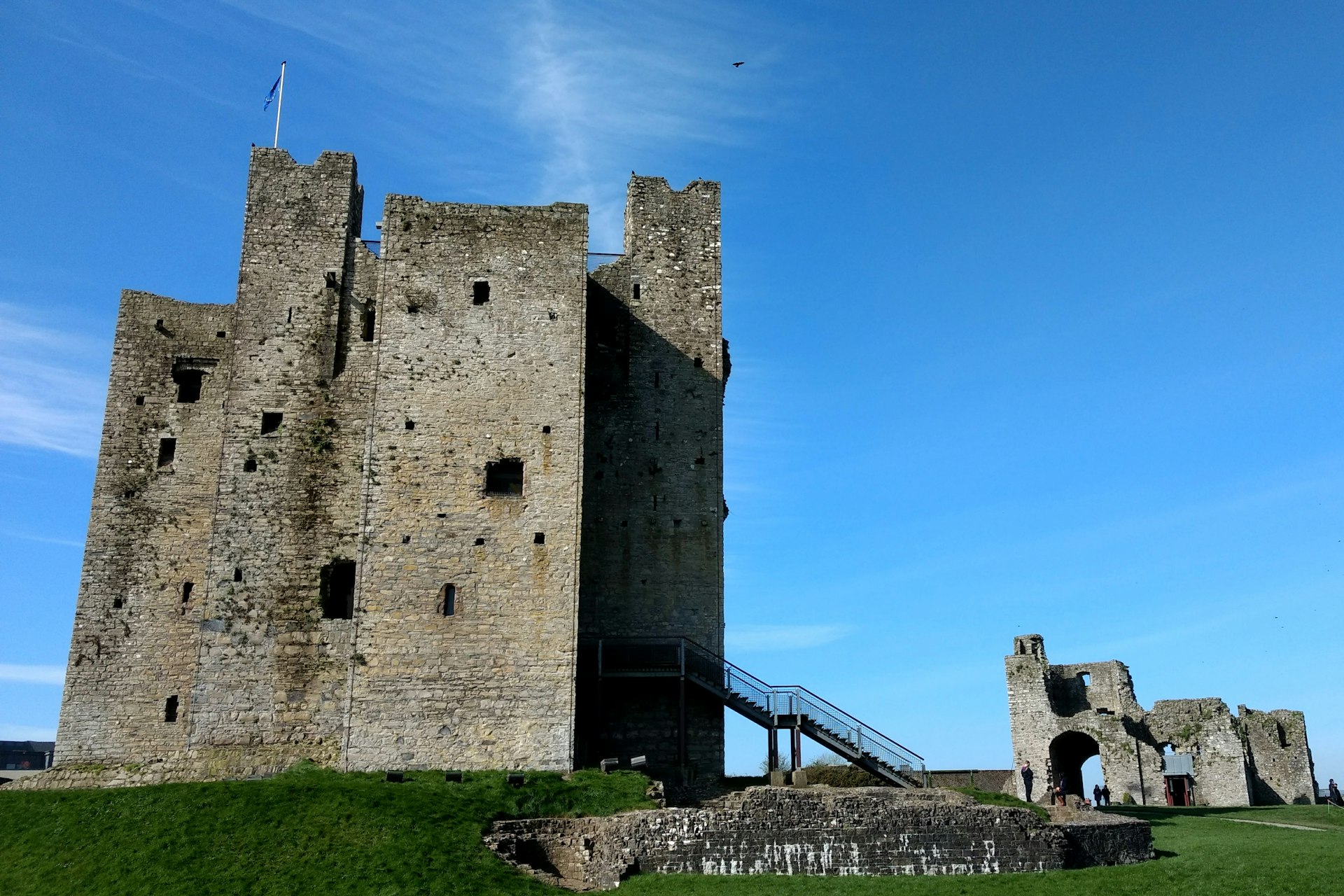
Twenty kilometres south of here, at a bend in the Boyne, Trim Castle is grand enough to have featured as no less than three castles (Edinburgh, York and the Tower of London) in the film Braveheart. Its atmospheric keep offers wonderful views of the countryside around, and a very solid reminder of another set of arrivals: Normans who came as mercenaries and ended up as rulers.
The Boyne’s game of thrones
The Boyne Valley was accustomed to being at the heart of Irish affairs, but in 1690 it was the site of a battle that shaped European history. Over 60,000 troops clashed a few kilometres west of Drogheda (now one of the best bases for exploring the region), as James II and his son-in-law William of Hanover fought for the British Isles. Despite the valiant efforts of the Jacobite cavalry, William’s larger, better-equipped force won the day – James fled to France, winning the nickname Seamus a' chaca ('James the shit'), and cementing the power of Protestant landowners and clergy across Ireland.
The site today is home to an enjoyable visitor centre, which explains the twists and turns of the battle via exhibits and video.
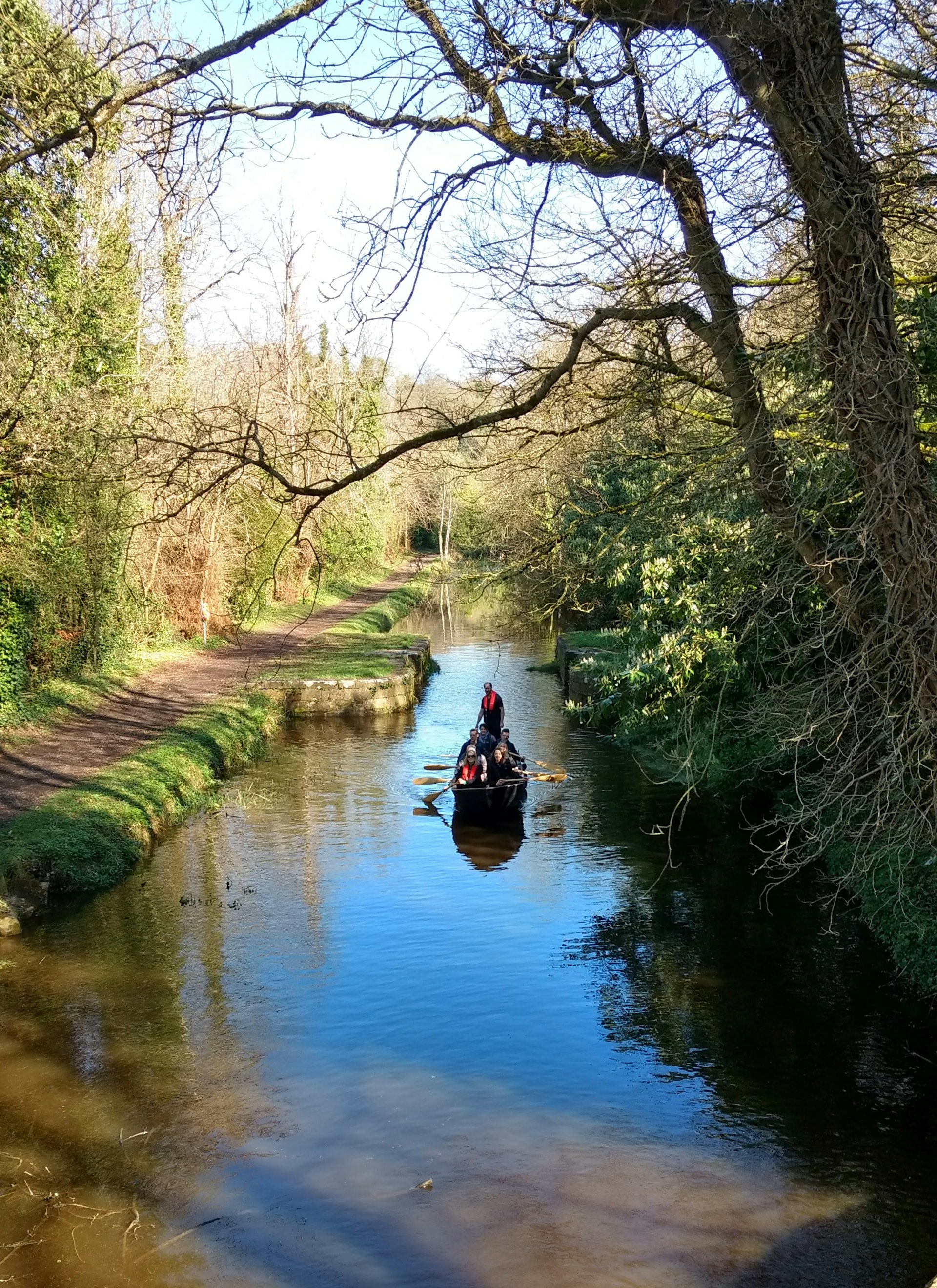
The landscape of the Boyne Valley isn’t the most stunning in Ireland – there’s a fair bit of commuter-belt sprawl around these lovely rolling hills. But you can give your explorations a focus by taking a boat trip up the nearby Boyne Navigation canal with Boyne Boats (boyneboats.ie). A paddle up this quiet waterway on a traditional currach is a wonderfully intimate experience – the boats were used in the filming of Game of Thrones, making them an ideal spot from which to ponder the ambition and bloodshed of the conflict.
Kings, rock and whiskey
With power came wealth, and the stately homes of Anglo-Irish landowners dot the Boyne Valley and beyond. Substantial yet elegant Slane Castle was home to Elizabeth Conyngham, the mistress of King George VI, and it's said the road between Dublin and Slane was built especially straight to speed the smitten king's journeys.
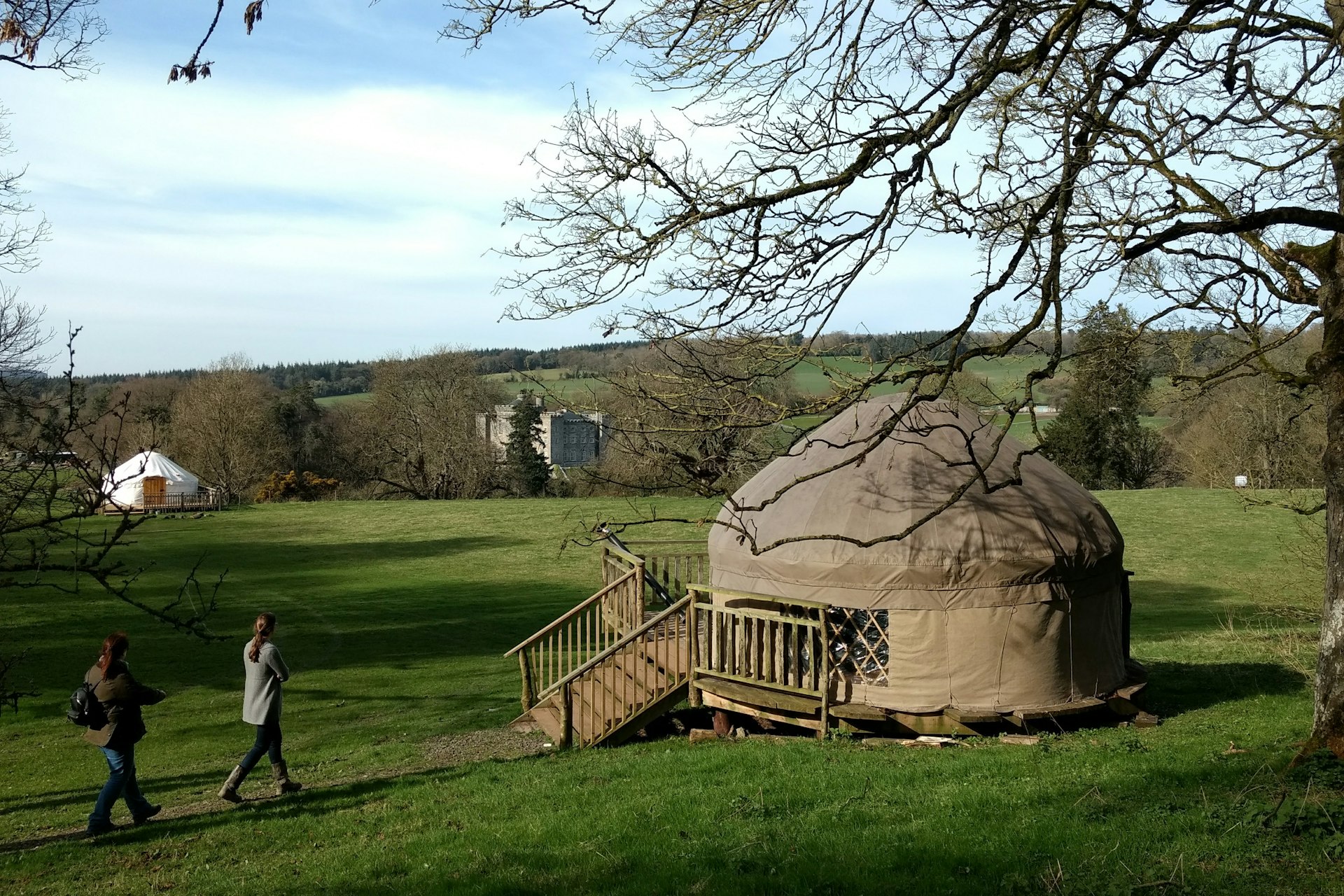
The great estates have mostly been broken up, and the Conynghams have diversified: Slane Castle is a famous venue for concerts (including U2 – who also recorded parts of The Unforgettable Fire in the Great Library – and Guns ‘n’ Roses), there’s now a rather lovely organic glampsite (rockfarmslane.ie) on the hills above, and a €47 million whiskey distillery opened in late spring 2017. Visits to the house and distillery offer a neat perspective on changing times, from the burnished new copper stills to the grand paintings of distant aristocrats, as the Boyne takes its peaceful path along the valley below.
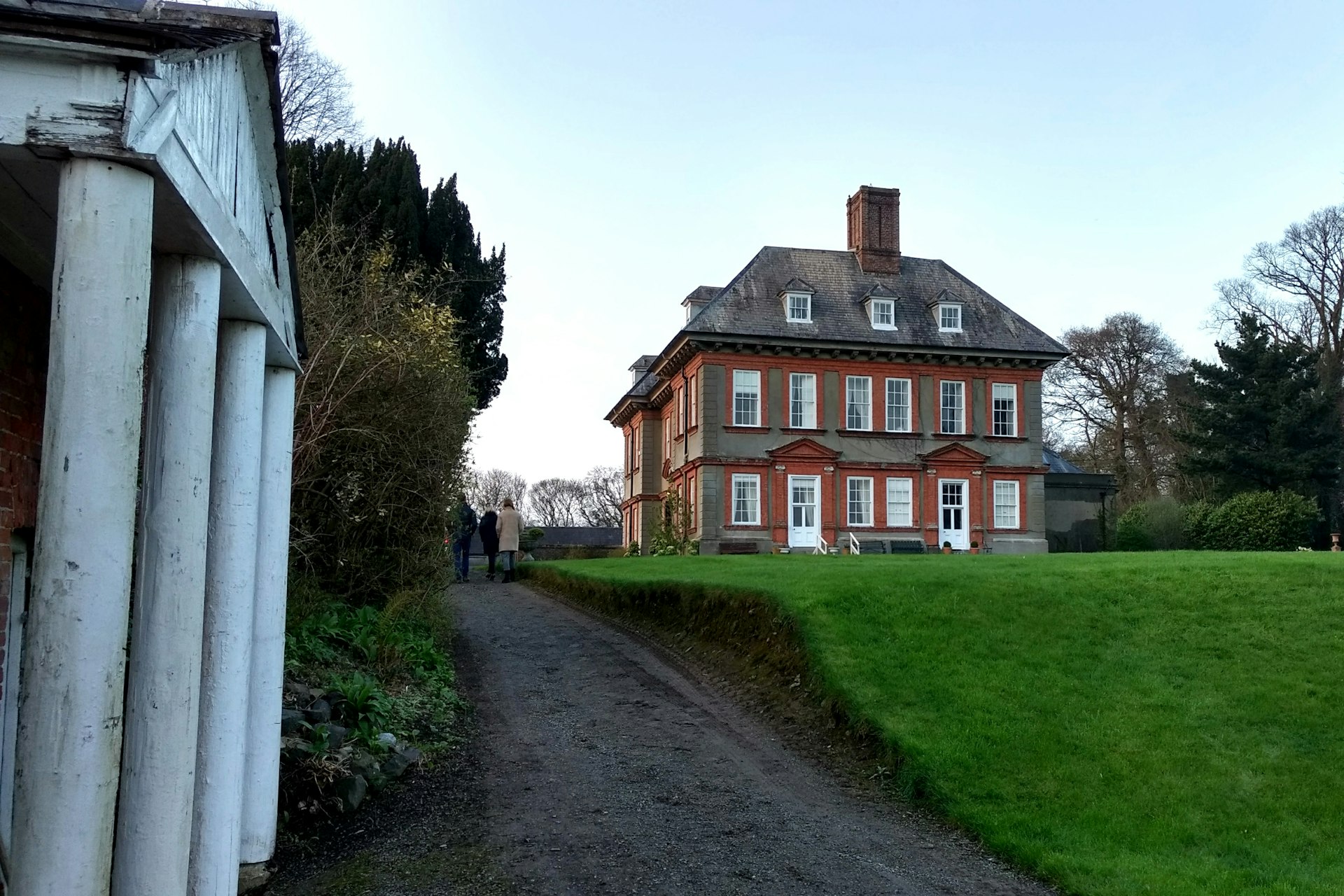
Nearby Beaulieu House (beaulieuhouse.ie) has a gorgeous garden and a soaring hall, as well as connections to motor racing and the martyred 17th-century archbishop Oliver Plunkett.
Gin and local produce
The Boyne Valley is no fossil. Slane Castle’s whiskey is a traditional spirit given a contemporary twist (their first release is matured in virgin, seasoned and sherry casks), while Tayto Park uses Ireland’s most iconic crisp – and a dash of Irish mythology – as the hook for a popular theme park.

Listoke Distillery (listokedistillery.ie), meanwhile, takes a drink more associated with England and the Netherlands and uses local botanicals to tie it into the region’s buoyant food scene. A gin-making session at this 19th century house just outside Drogheda is enormous fun – you get to research and perfect your own mix of botanicals while drinking G&Ts.
Indeed, restaurants across the Boyne Valley are proudly touting their local produce, from lamb and goat’s cheese to pale ale, and there’s fine food on offer at restaurants including Tankardstown House (tankardstown.ie) and Scholars. And eating local food ties you back – in a satisfyingly filling way – to the landscape that has made this place a crucible of Irish history.
James travelled to Ireland with support from Discover Boyne Valley (discoverboynevalley.ie) and Aer Lingus (aerlingus.com). Lonely Planet contributors do not accept freebies in exchange for positive coverage.
Last updated in August 2017.

